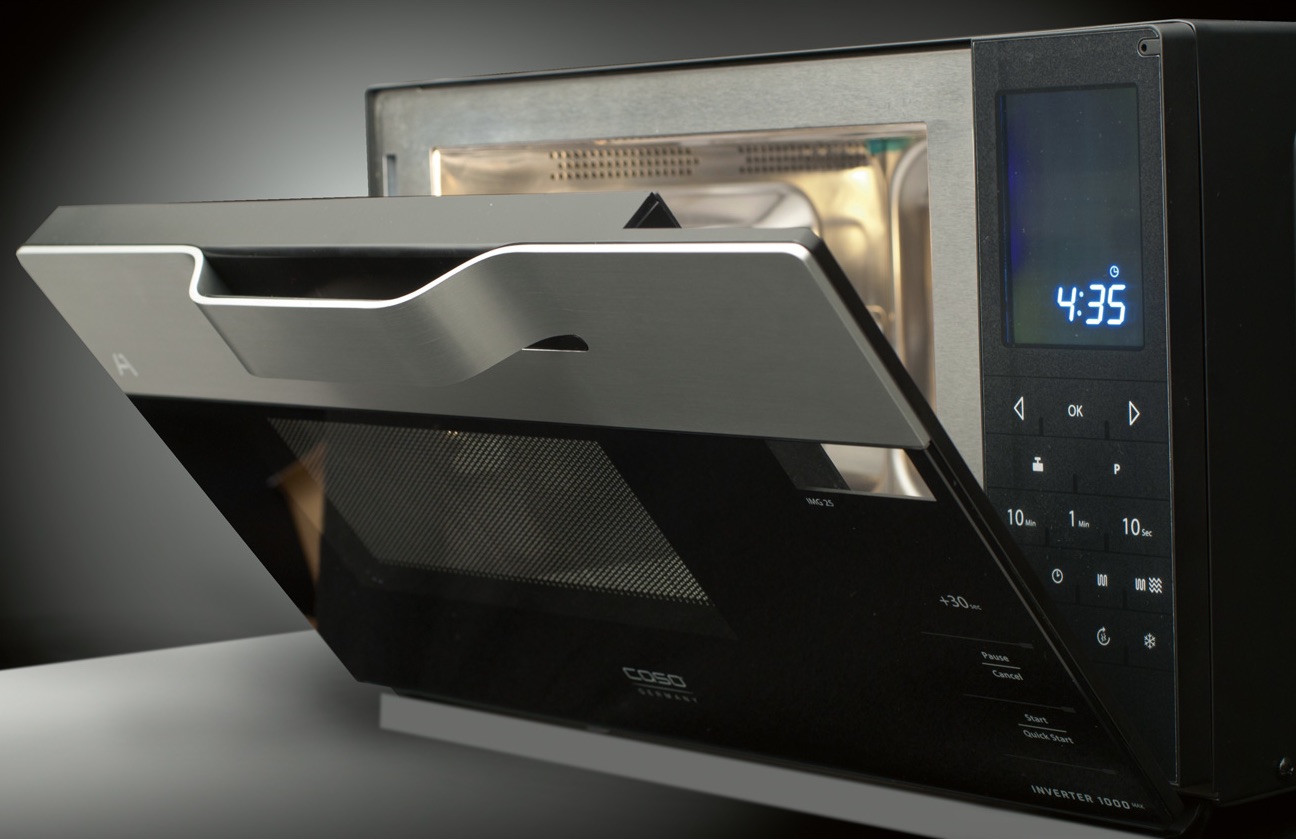

Articles
What Is An Inverter Microwave Oven
Modified: August 16, 2024
Discover the benefits of using an inverter microwave oven for your cooking needs. Read our informative articles and find out how this innovative technology can enhance your kitchen experience.
(Many of the links in this article redirect to a specific reviewed product. Your purchase of these products through affiliate links helps to generate commission for Storables.com, at no extra cost. Learn more)
Introduction
The microwave oven has revolutionized the way we cook and heat our food. It has become an essential appliance in most households, providing quick and convenient meals with just a push of a button. But have you ever heard of an inverter microwave oven? In this article, we will explore what exactly an inverter microwave oven is and how it differs from traditional microwaves.
Unlike conventional microwaves that use transformers and magnetrons to create heat, inverter microwaves utilize a different technology altogether. Inverter microwaves are equipped with power inverters that convert electricity into high-frequency alternating currents, which are responsible for generating heat. This innovative technology allows for more precise control over the cooking process, resulting in improved cooking performance and better quality food.
One of the key advantages of an inverter microwave oven is its ability to deliver consistent heat levels. Traditional microwaves use a simple on-off mechanism, which can result in uneven heating. With an inverter microwave, however, the power is continuously adjusted to maintain a consistent temperature throughout the cooking process. This ensures that your food is cooked more evenly, without any hotspots or cold spots.
In addition to even heating, an inverter microwave oven also offers precise power control. Unlike traditional microwaves that operate at fixed power levels, an inverter microwave can adjust the power output in small increments. This means you have greater control over the cooking process, allowing you to defrost food more gently, simmer sauces without boiling over, and achieve more precise cooking results overall.
Another advantage of an inverter microwave oven is its ability to defrost food more efficiently. In traditional microwaves, the defrosting process is often a hit-or-miss affair, with some parts of the food starting to cook while others remain frozen. Inverter microwaves, on the other hand, use a low-power setting combined with the continuous power adjustment to defrost food more evenly and quickly.
Despite its numerous advantages, it is important to note that inverter microwave ovens may come with a higher price tag compared to traditional models. This is due to the advanced technology and features they offer. However, the improved cooking performance and convenience they provide might justify the higher cost for many individuals.
So, if you are someone who values precise control over your cooking, consistent heating, and efficient defrosting, an inverter microwave oven might be the right choice for you. In the next sections, we will delve deeper into the workings of an inverter microwave oven, compare it to traditional microwaves, and provide tips for using it efficiently. So, keep reading to learn more!
Key Takeaways:
- Inverter microwave ovens offer precise control, consistent heating, and efficient defrosting, making them a valuable addition to any kitchen seeking enhanced cooking performance and convenience.
- When considering an inverter microwave oven, weigh the advantages of superior cooking results against potential drawbacks such as higher cost and repair complexity, and explore features to find the model that best suits your needs.
Read also: 8 Best Inverter Microwave Oven for 2025
How Does an Inverter Microwave Oven Work
An inverter microwave oven operates on a different principle than traditional microwaves. While traditional microwaves use transformers and magnetrons to create heat, inverter microwaves utilize power inverters to generate the desired level of heat.
The power inverter in an inverter microwave converts the electrical energy from the wall outlet into high-frequency alternating currents. These alternating currents are responsible for creating the electromagnetic waves that heat the food. The inverter also regulates the power output to provide precise control over the cooking process.
When you select the cooking time and power level on an inverter microwave, the power inverter adjusts the intensity of the alternating current to achieve the desired heat output. This allows for more precise power control compared to traditional microwaves, which can only operate at specific power levels.
Traditional microwaves operate on the principle of on-off cycling. They use full power during active periods and remain inactive during inactive periods. This on-off cycling can result in uneven heating, with some areas of the food becoming overcooked while others remain undercooked.
In contrast, an inverter microwave oven maintains a consistent power output by continuously adjusting the intensity of the alternating current. This ensures that the food is cooked more evenly and eliminates the risk of hotspots or cold spots.
The continuous power adjustment capability of an inverter microwave also allows for more precise defrosting. When you select the defrost setting, the inverter microwave will operate at a low power level and adjust the intensity of the alternating current to defrost the food gently and evenly. This prevents partial cooking and preserves the quality of the food.
Furthermore, the use of power inverters in inverter microwaves enables them to heat food more quickly and efficiently. The precise control over the power output allows for faster cooking times, making inverter microwaves a convenient option for busy individuals.
Overall, the use of power inverters in inverter microwave ovens provides more control, consistent heat, and efficient cooking. It eliminates the limitations of traditional microwaves and allows for superior cooking performance and versatility.
Now that you understand how an inverter microwave oven works, let’s explore the advantages and disadvantages of using one compared to traditional microwaves.
Advantages of an Inverter Microwave Oven
Inverter microwave ovens offer several advantages over traditional microwaves, making them a popular choice among cooking enthusiasts and busy individuals alike. Here are some of the key advantages:
- Consistent Heating: One of the main advantages of an inverter microwave is its ability to deliver consistent heating. Traditional microwaves use an on-off mechanism, which can result in uneven cooking, with some spots overheating while others remain undercooked. In contrast, inverter microwaves continuously adjust the power output to maintain a consistent temperature throughout the cooking process. This ensures that your food is cooked evenly, without any hotspots or cold spots.
- Precise Power Control: Inverter microwave ovens provide precise power control, allowing you to adjust the power output in small increments. Traditional microwaves typically operate at fixed power levels, limiting your ability to customize the cooking process. With an inverter microwave, you have greater control over the cooking temperature, allowing you to defrost food gently, simmer sauces without boiling over, and achieve precise cooking results.
- Efficient Defrosting: Inverter microwaves excel in defrosting food more efficiently compared to traditional microwaves. Traditional microwaves often result in uneven defrosting, with some parts of the food starting to cook while others remain frozen. Inverter microwaves, on the other hand, utilize a low-power setting combined with continuous power adjustment to defrost food more evenly and quickly.
- Faster Cooking Times: The precise control over the power output in inverter microwave ovens allows for faster cooking times. With the ability to deliver consistent and targeted heat, you can cook your meals more efficiently, saving you time in the kitchen. This makes inverter microwaves a convenient option for busy individuals who need to prepare meals quickly.
- Improved Food Quality: The even and precise heating provided by inverter microwave ovens enhances the quality of the cooked food. Whether you are reheating leftovers or cooking from scratch, the consistent heat distribution ensures that your food retains its flavor, moisture, and texture. You can enjoy evenly cooked and delicious meals every time you use an inverter microwave oven.
- Energy Efficiency: Inverter microwave ovens are designed to be energy efficient. The continuous power adjustment feature ensures that the microwave only uses the amount of power necessary for the cooking process, minimizing energy waste. This not only helps to reduce your electricity bills but also benefits the environment.
Overall, inverter microwave ovens offer superior cooking performance, precise control, efficient defrosting, and energy-saving benefits. They are a worthwhile investment for those seeking high-quality cooking results and convenience in their kitchen. In the next section, we will explore the disadvantages of using an inverter microwave oven to provide a balanced view of this innovative appliance.
Disadvantages of an Inverter Microwave Oven
While inverter microwave ovens offer numerous advantages, it is important to consider the potential disadvantages before making a purchase decision. Here are some key disadvantages to keep in mind:
- Higher Cost: Inverter microwave ovens tend to be more expensive than traditional microwaves. This is due to the advanced technology and features they offer, such as the power inverter for precise control and consistent heating. The higher cost may be a deterrent for those with a limited budget.
- Complexity: Inverter microwave ovens may have more complex controls and settings compared to traditional microwaves. This means there may be a learning curve involved in understanding and utilizing all the functionalities effectively. However, once you become familiar with the controls, you can take full advantage of the enhanced cooking capabilities.
- Potential Repair Costs: As inverter microwave ovens contain more advanced components, they may require specialized repairs if any issues arise. Repairing an inverter microwave oven can be more expensive and time-consuming compared to repairing a traditional microwave. It is important to factor in the potential repair costs when considering the overall cost of owning an inverter microwave.
- Limited Availability: Inverter microwave ovens may not be as widely available as traditional microwaves. Depending on your location, you may have limited options to choose from. However, with the growing popularity of inverter technology, the availability is gradually increasing.
- Size and Capacity: Inverter microwave ovens may be larger in size than traditional microwaves, which can be a drawback if you have limited counter space in your kitchen. Additionally, the larger size may also result in a larger capacity, which may not be necessary if you typically only cook small portions of food.
It is important to weigh the advantages against the disadvantages and consider your specific needs and budget when deciding whether to invest in an inverter microwave oven. While the disadvantages should be taken into account, the benefits of consistent heating, precise control, efficient defrosting, and improved food quality may outweigh the drawbacks for many individuals.
Now that we have explored the advantages and disadvantages of an inverter microwave oven, let’s move on to comparing inverter microwaves and traditional microwaves to help you make an informed decision.
When shopping for an inverter microwave oven, look for one with adjustable power levels. This feature allows for more precise cooking and helps prevent overcooking or uneven heating.
Comparison between Traditional Microwaves and Inverter Microwaves
When choosing between a traditional microwave and an inverter microwave, it’s important to consider the differences in their functionality and performance. Here are some key points of comparison:
- Heating Method: Traditional microwaves use transformers and magnetrons to generate heat, while inverter microwaves utilize power inverters to convert electricity into high-frequency alternating currents. This fundamental difference in heating method contributes to variations in cooking results.
- Consistency of Heating: In traditional microwaves, the on-off cycling mechanism can result in uneven heating, with some areas of the food becoming overcooked while others remain undercooked. Inverter microwaves, on the other hand, deliver consistent heating throughout the cooking process due to the continuous power adjustment. This ensures more even cooking results and eliminates hotspots and cold spots.
- Power Control: Traditional microwaves typically operate at fixed power levels, limiting your ability to adjust the intensity of the heat. Inverter microwaves offer precise power control, allowing you to adjust the power output in small increments. This enables more precise cooking, defrosting, and simmering, giving you greater control over the outcome of your dishes.
- Defrosting Efficiency: Inverter microwaves excel in defrosting food more evenly and quickly compared to traditional microwaves. The continuous power adjustment in inverter microwaves ensures gentle and even defrosting, minimizing the risk of partial cooking and preserving the quality of the food.
- Cooking Times: The consistent heating and precise power control in inverter microwaves often result in faster cooking times compared to traditional microwaves. The ability to distribute heat evenly and efficiently allows you to prepare meals more quickly, saving you time in the kitchen.
- Energy Efficiency: Inverter microwave ovens are designed to be energy efficient. The continuous power adjustment ensures that the microwave only uses the necessary amount of power, reducing energy waste. Traditional microwaves, which operate on an on-off cycling mechanism, may consume more energy in comparison.
- Cost: Inverter microwave ovens tend to be more expensive than traditional microwaves due to the advanced technology and features they offer. While they may require a higher upfront investment, the enhanced cooking performance and capabilities may justify the cost for those seeking precise control and consistent results.
Ultimately, the choice between a traditional microwave and an inverter microwave depends on your cooking preferences, budget, and desired cooking results. If you prioritize consistent heating, precise power control, efficient defrosting, and faster cooking times, an inverter microwave may be the better option for you. However, if you’re looking for a more budget-friendly and straightforward option, a traditional microwave can still meet your basic cooking needs.
Now that we have compared traditional microwaves and inverter microwaves, let’s explore the features to consider when buying an inverter microwave oven.
Read more: What Is A Microwave Oven
Features to Consider when Buying an Inverter Microwave Oven
When shopping for an inverter microwave oven, there are several important features to consider to ensure you choose the right model that meets your cooking needs. Here are some key features to look out for:
- Power Output: Inverter microwave ovens come in various power outputs, typically measured in watts. Higher wattage generally means faster cooking times, but it’s important to consider your specific cooking requirements. If you only plan to use the microwave for basic heating and defrosting, a lower wattage model may suffice. However, if you regularly cook or want quicker results, opt for a higher wattage model.
- Capacity: Consider the capacity of the microwave, which refers to the amount of food it can accommodate. The capacity is usually measured in liters or cubic feet. Think about the size of your typical meals and the number of people you usually cook for. A larger capacity will be helpful for those who frequently cook larger portions, while a smaller capacity may be sufficient for individuals or smaller households.
- Control Panel: The control panel should be user-friendly and intuitive. Look for an inverter microwave oven with clear labeling and easy-to-use buttons or a digital display. Some models may offer preset cooking programs for specific dishes, which can be a convenient feature for beginners or those who want to streamline their cooking process.
- Cooking Modes and Sensor Technology: Some inverter microwave ovens come with various cooking modes, such as defrost, reheat, popcorn, or beverage. These pre-programmed modes can simplify the cooking process and ensure optimal results. Additionally, look for models with built-in sensor technology that can detect the moisture or steam levels in your food, adjusting the cooking time and power output accordingly. This helps prevent overcooking or undercooking your dishes.
- Size and Design: Consider the dimensions of the microwave and ensure it fits your available counter space. Additionally, think about the design aesthetics, as the microwave will be a visible part of your kitchen. Look for a design that complements your kitchen decor or matches your personal style.
- Additional Features: Some inverter microwave ovens may offer additional features like child lock, delay start, keep warm function, or convection cooking. Assess your needs and preferences to determine which extra features, if any, are important to you.
- Brand and Warranty: Research reputable brands known for their quality and reliability. Check product reviews and ratings to get a sense of customer satisfaction. Additionally, consider the warranty offered by the manufacturer to protect your investment and ensure peace of mind.
By considering these features and your specific cooking requirements, you can select an inverter microwave oven that suits your needs and enhances your cooking experience. Now that you’re equipped with knowledge about the features to look for, let’s explore some tips for using an inverter microwave oven efficiently.
Tips for Using an Inverter Microwave Oven Efficiently
To make the most out of your inverter microwave oven and achieve optimal cooking results, consider the following tips:
- Read the User Manual: Familiarize yourself with the specific features and functionalities of your inverter microwave oven by reading the user manual. This will help you understand how to utilize all the settings and cooking modes effectively.
- Use Microwave-Safe Containers: When cooking or reheating food, make sure to use microwave-safe containers or dishes. Avoid using metal or dishes with metallic trim, as they can cause sparks and damage the microwave. Opt for microwave-safe glass, ceramic, or plastic containers instead.
- Stir and Rotate: To ensure even heating, stir and rotate the food during the cooking process. This will help distribute the heat more evenly and prevent any areas from being overcooked or undercooked.
- Cover Food when Necessary: Covering your food with a microwave-safe lid or microwave-safe plastic wrap can help retain moisture and prevent splatters. This is particularly useful when reheating leftovers or cooking foods that tend to dry out easily.
- Take Advantage of Preset Settings: Many inverter microwave ovens come with preset cooking modes for specific dishes. Utilize these presets to simplify the cooking process and ensure optimal results. However, keep in mind that these presets are just suggestions and may require some adjustments depending on your preferences and the specific food you are cooking.
- Utilize Defrosting Power Levels: Inverter microwave ovens offer precise defrosting capabilities. Take advantage of the different power levels available to defrost food gently and evenly. Follow the guidelines provided in the user manual for defrosting various types of food.
- Monitor Cooking Time: Pay attention to the cooking time and make adjustments as needed. Cooking times can vary based on the wattage of your microwave and the amount of food being cooked. Use the recommended cooking times as a guideline and check the food during the cooking process to ensure it is cooked to your desired level.
- Clean and Maintain Regularly: Keep your inverter microwave oven clean and well-maintained to ensure optimal performance. Wipe the interior and exterior surfaces regularly with a damp cloth. Follow the manufacturer’s instructions for cleaning and maintenance to prolong the lifespan of your microwave.
- Experiment and Explore: Don’t be afraid to experiment with different recipes and cooking techniques in your inverter microwave oven. Try out new dishes, adjust cooking times and power levels, and embrace the flexibility and precision the microwave offers. With practice, you’ll discover the perfect settings for your favorite meals.
By incorporating these tips into your cooking routine, you can make the most of your inverter microwave oven and enjoy efficient and delicious cooking results. Now, let’s summarize what we have discussed so far.
Conclusion
Inverter microwave ovens offer a range of benefits, including consistent heating, precise power control, efficient defrosting, and faster cooking times. These features make them a popular choice for those seeking enhanced cooking performance and convenience in their kitchen.
Compared to traditional microwaves, inverter microwaves utilize power inverters to generate heat, which allows for more precise control over the cooking process. The continuous power adjustment ensures even heating and eliminates hotspots or cold spots in the food. Additionally, inverter microwaves offer efficient and even defrosting, faster cooking times, and improved food quality.
While inverter microwave ovens come with advantages, it’s important to consider the potential disadvantages such as the higher cost and potential repair costs. Assessing your specific cooking needs, budget, and available kitchen space can help you determine if an inverter microwave oven is the right choice for you.
When shopping for an inverter microwave oven, it’s important to consider features such as power output, capacity, control panel, cooking modes, size and design, and additional features. Understanding these features will help you select the model that best suits your needs and preferences.
To make the most out of your inverter microwave oven, follow efficient cooking tips such as using microwave-safe containers, stirring and rotating food, covering food when necessary, utilizing preset settings, and monitoring cooking time. Regular cleaning and maintenance will also help ensure optimal performance and prolong the lifespan of your microwave.
In summary, inverter microwave ovens are a versatile and efficient option for cooking and heating food. By considering their advantages, disadvantages, features, and efficient usage tips, you can make an informed decision and enjoy the benefits of precise and convenient cooking in your kitchen.
So, whether you’re a cooking enthusiast looking for precise control or a busy individual in need of quick and efficient meals, an inverter microwave oven can be a valuable addition to your culinary toolkit.
Frequently Asked Questions about What Is An Inverter Microwave Oven
Was this page helpful?
At Storables.com, we guarantee accurate and reliable information. Our content, validated by Expert Board Contributors, is crafted following stringent Editorial Policies. We're committed to providing you with well-researched, expert-backed insights for all your informational needs.
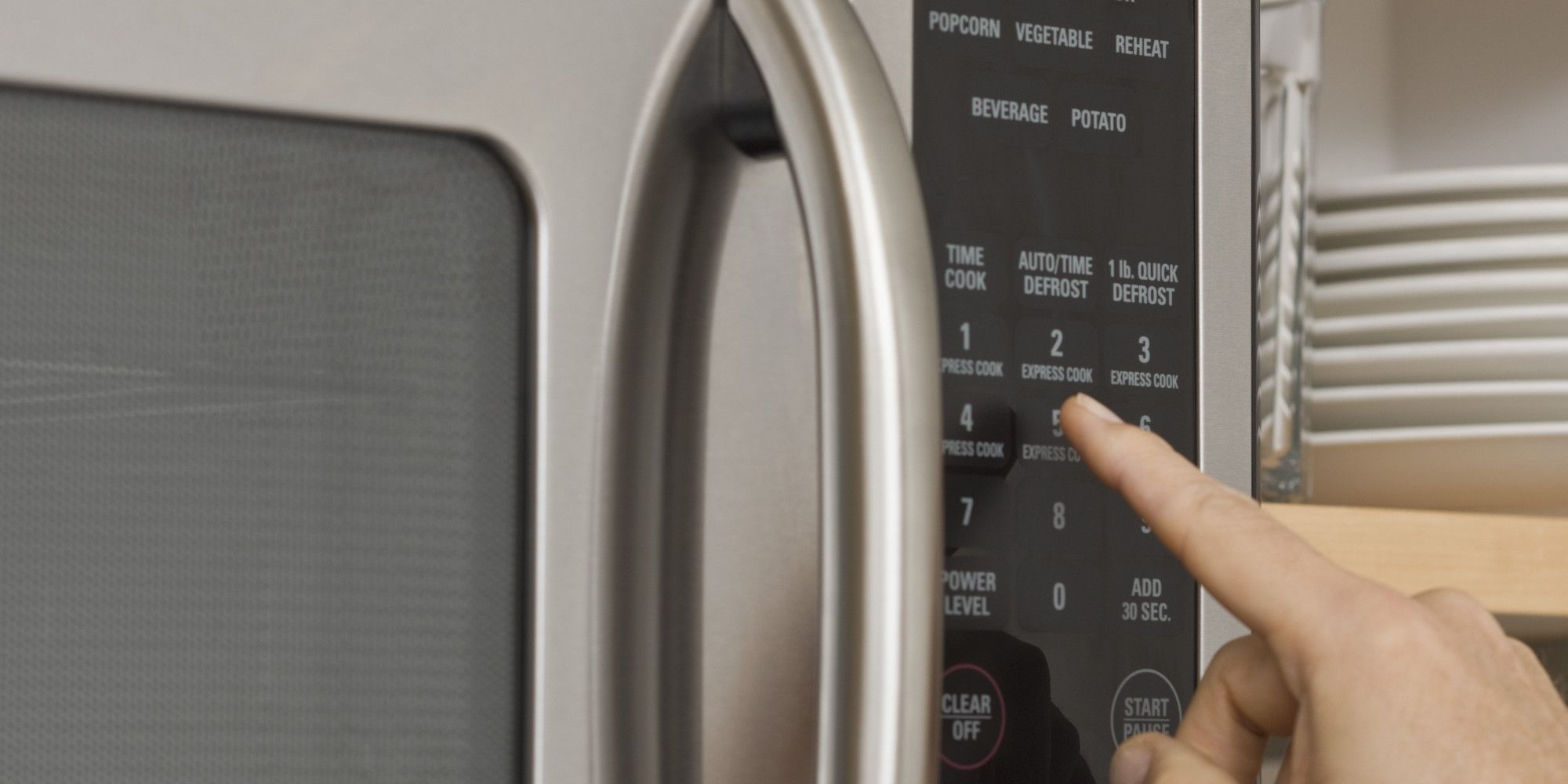
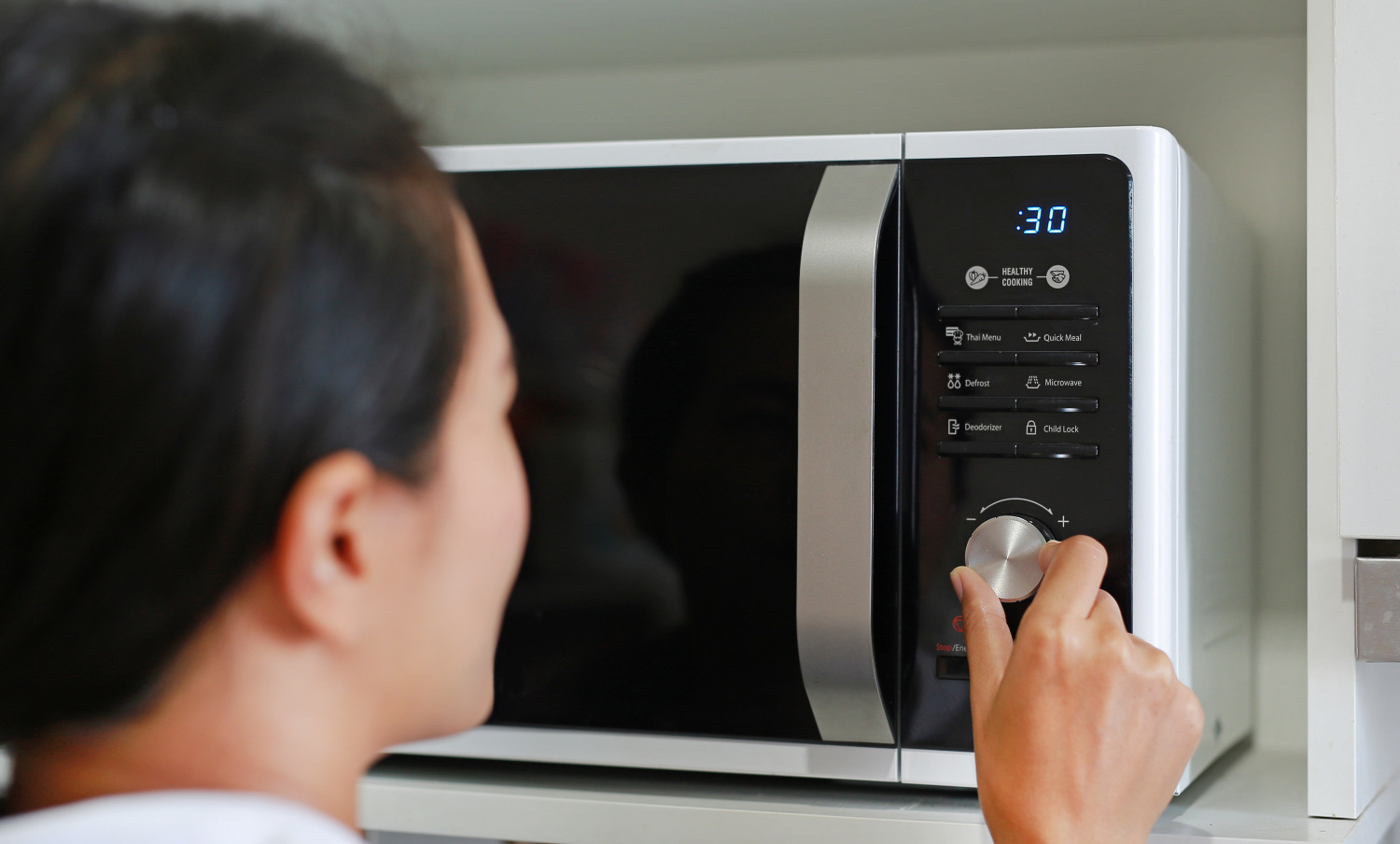
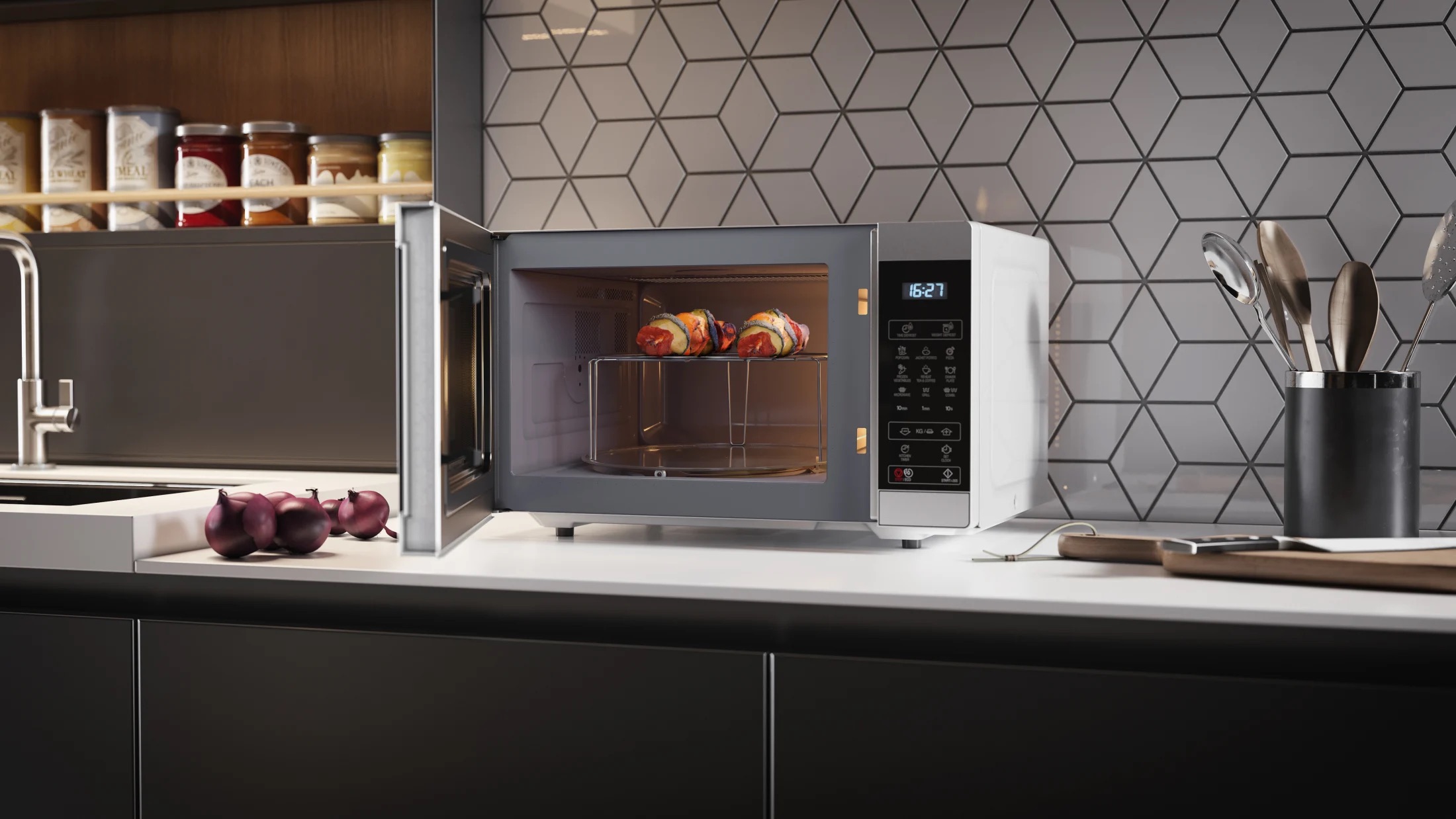
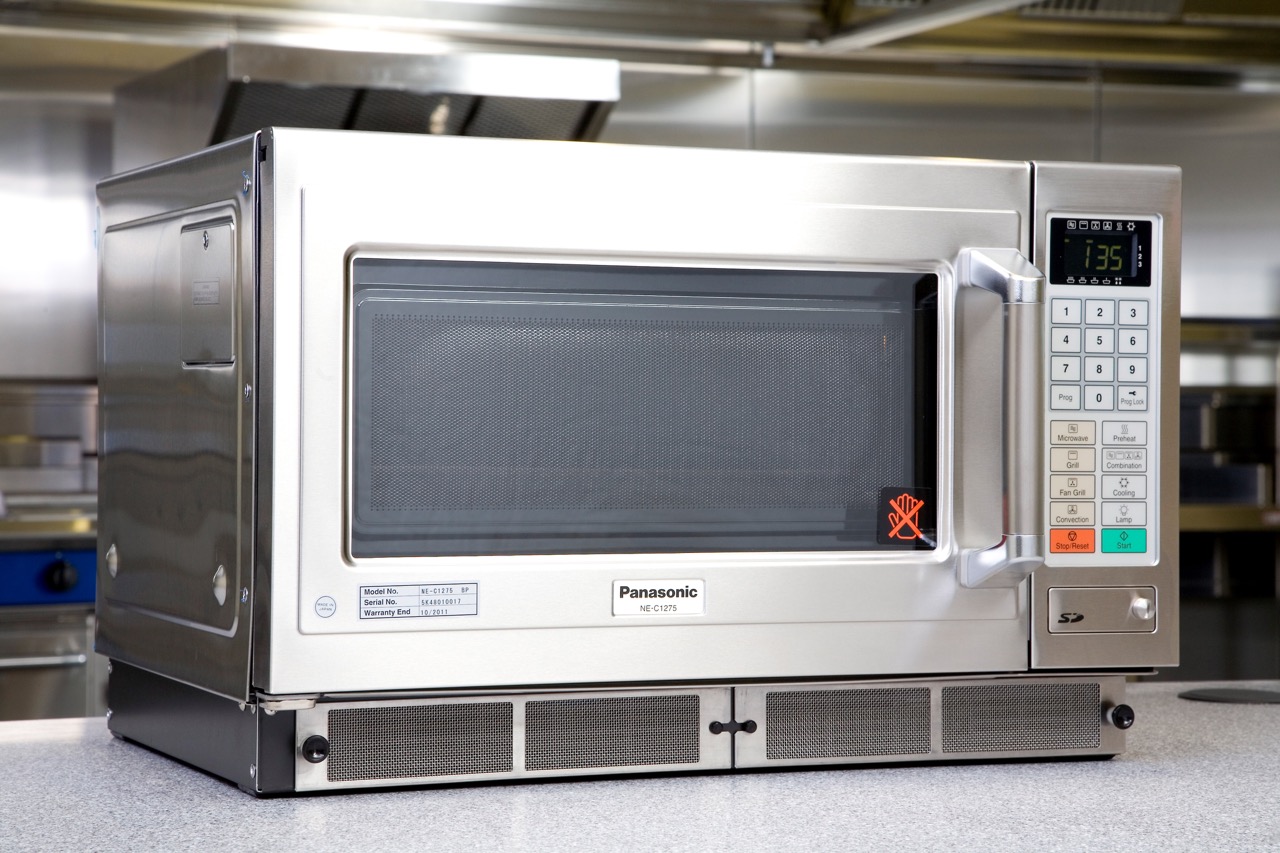
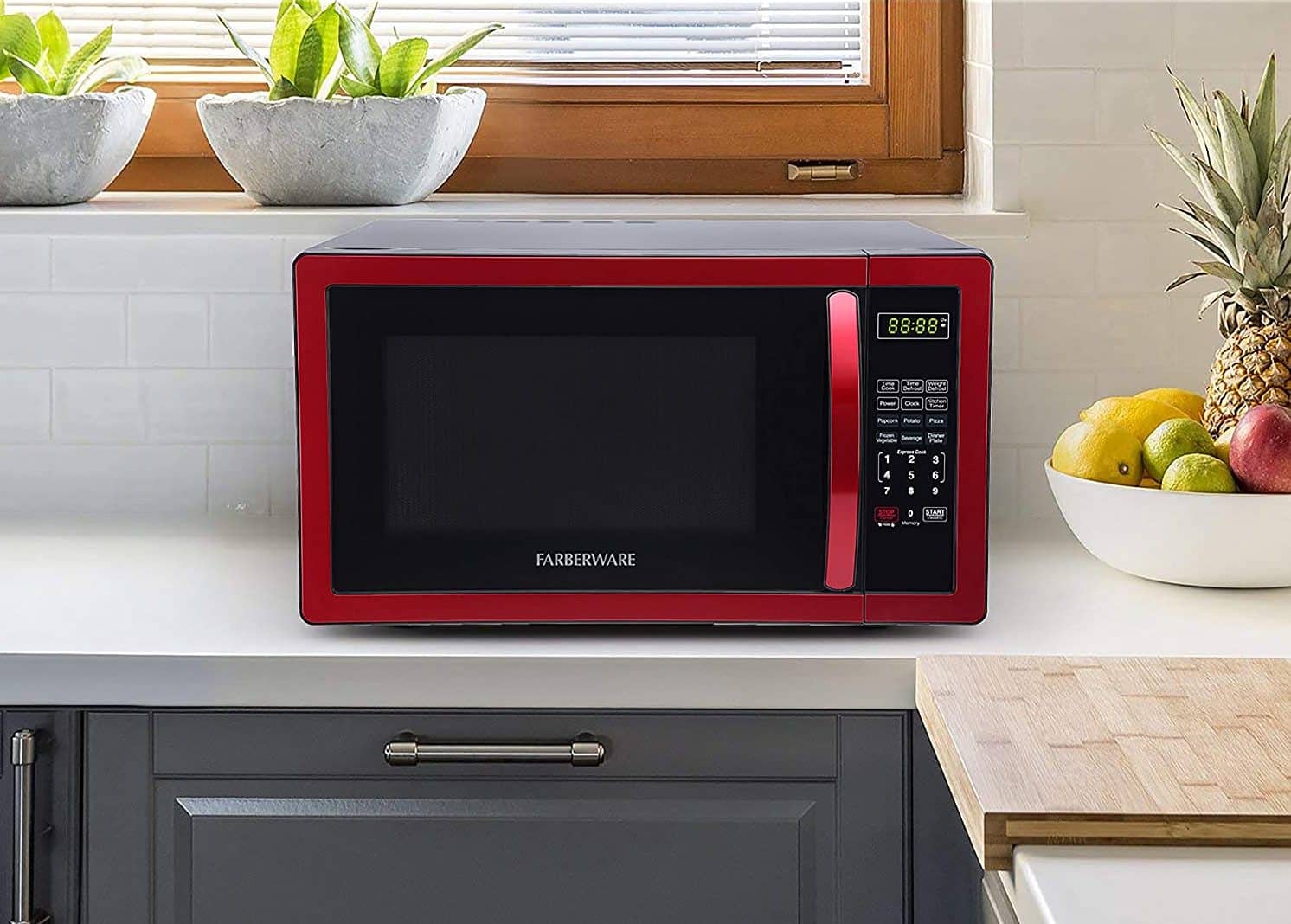
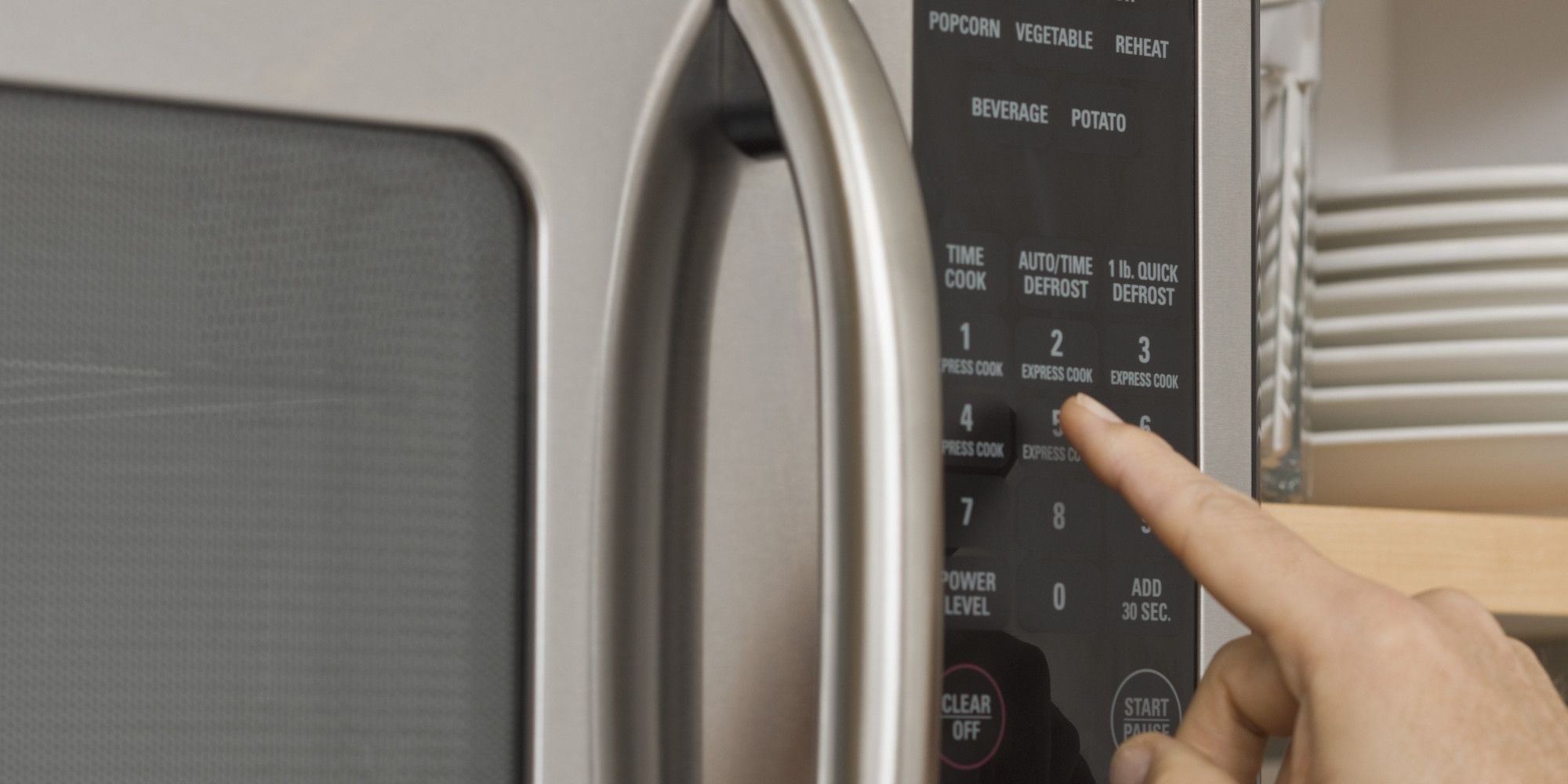
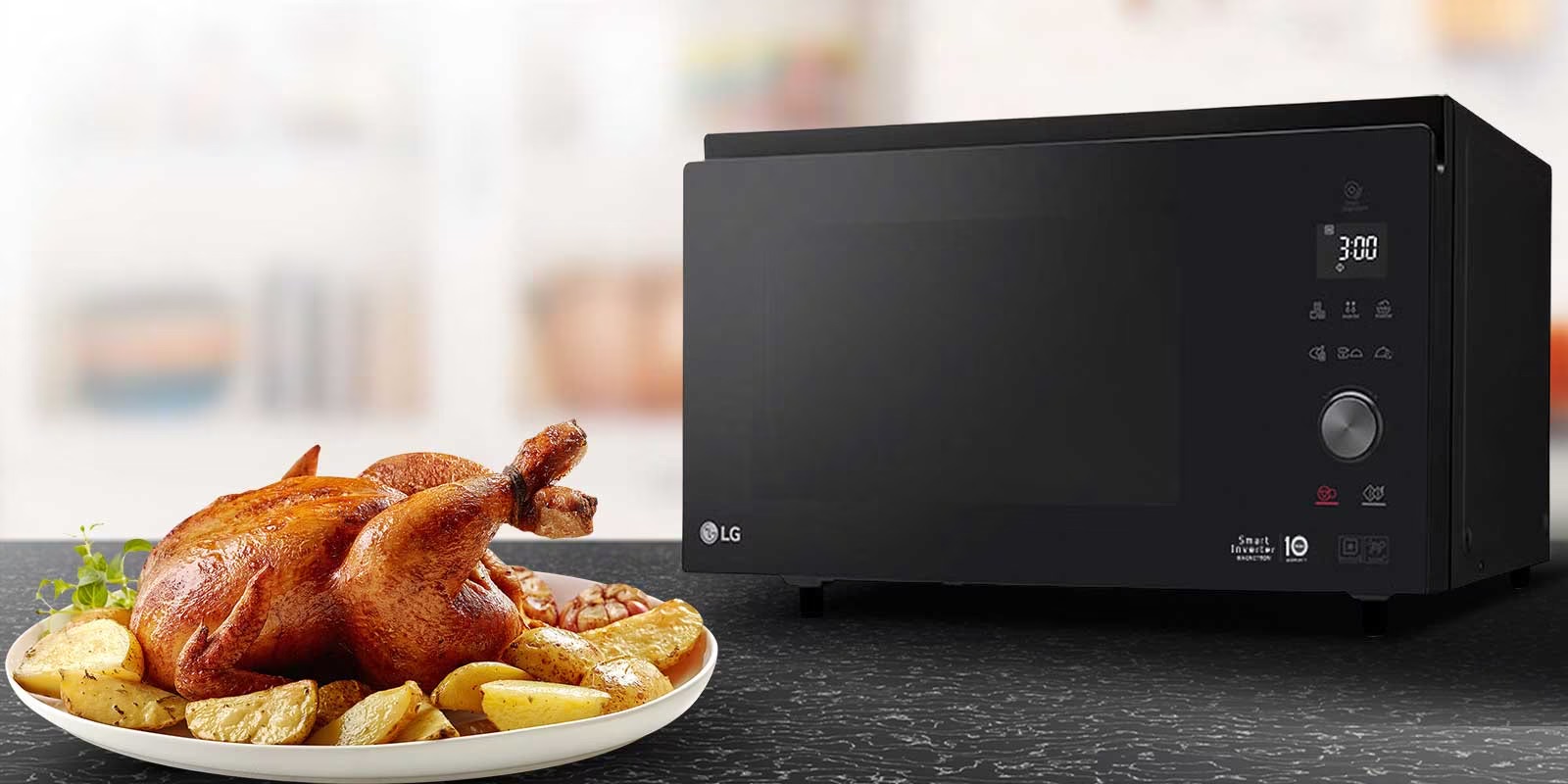
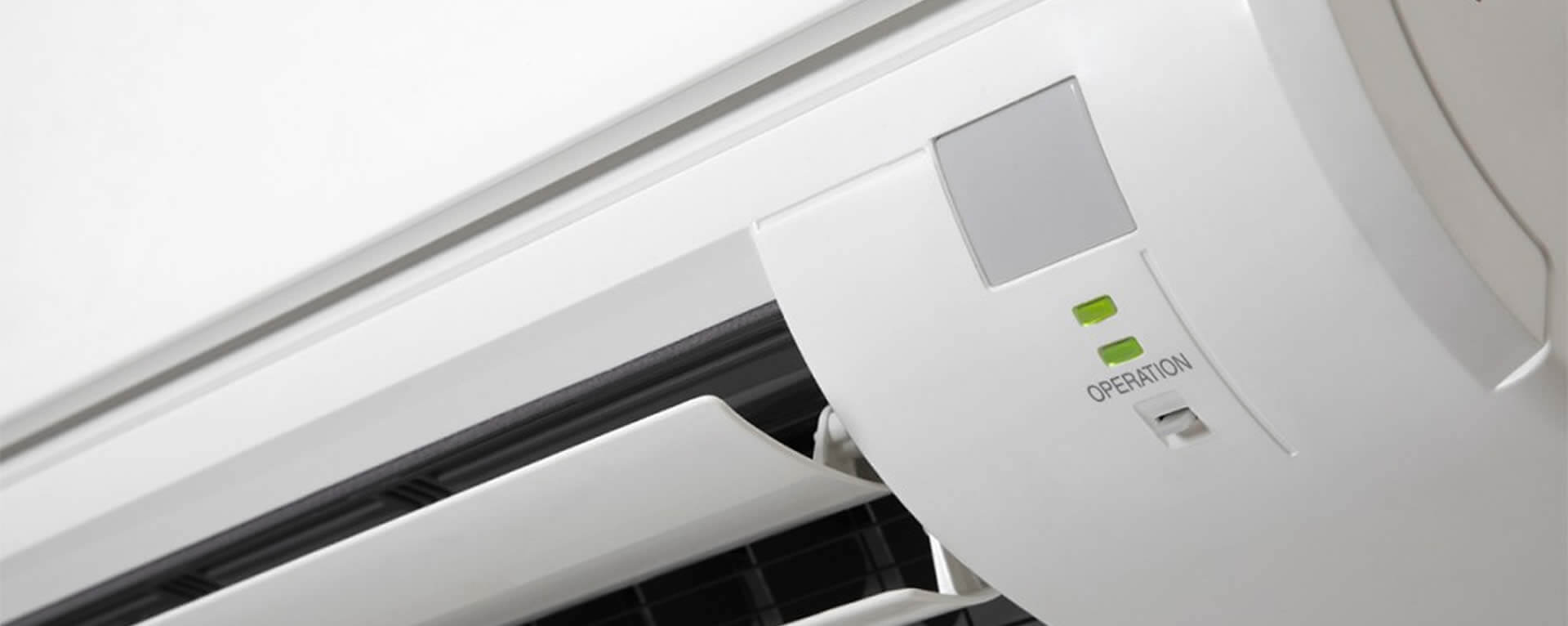
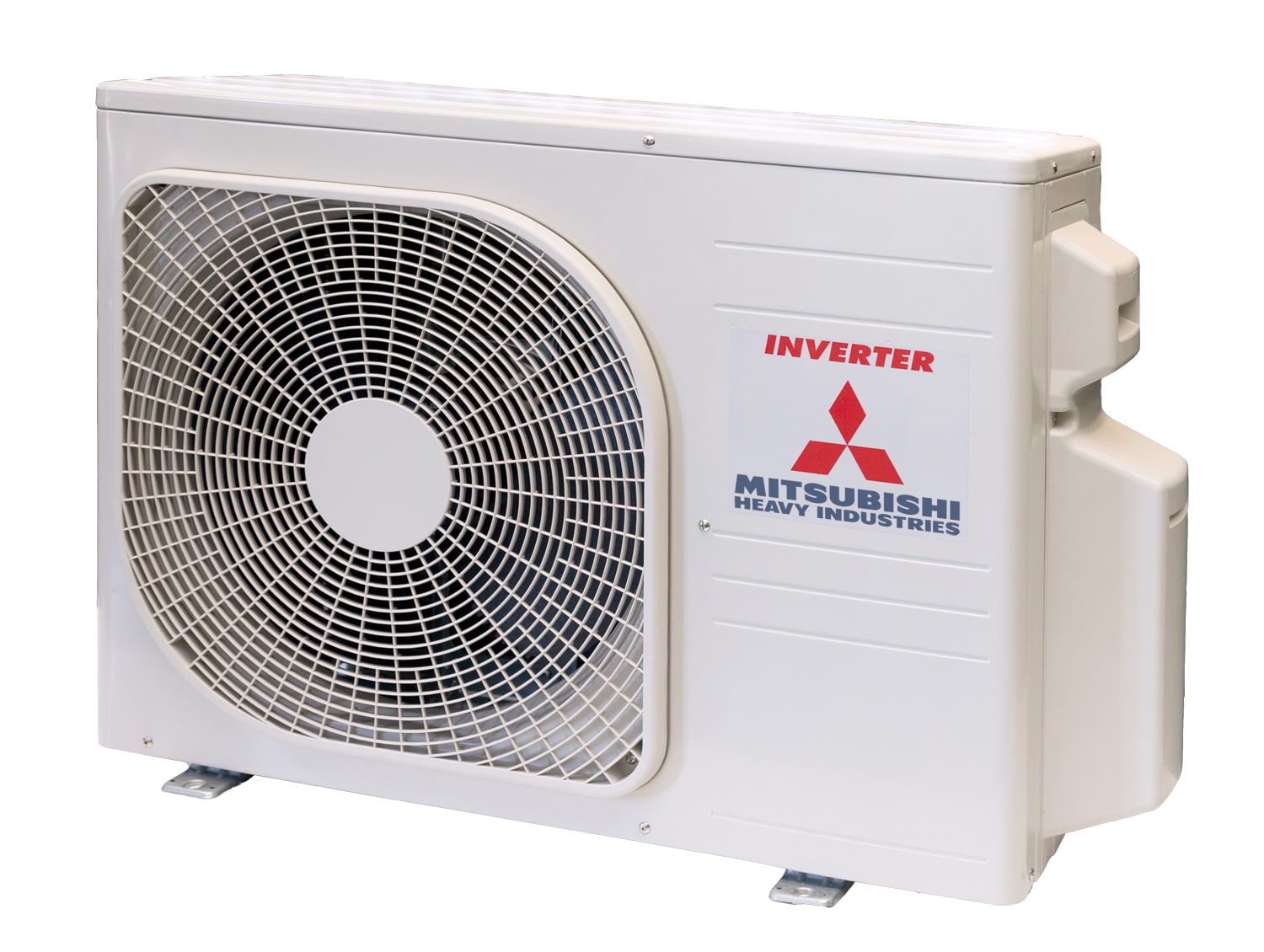
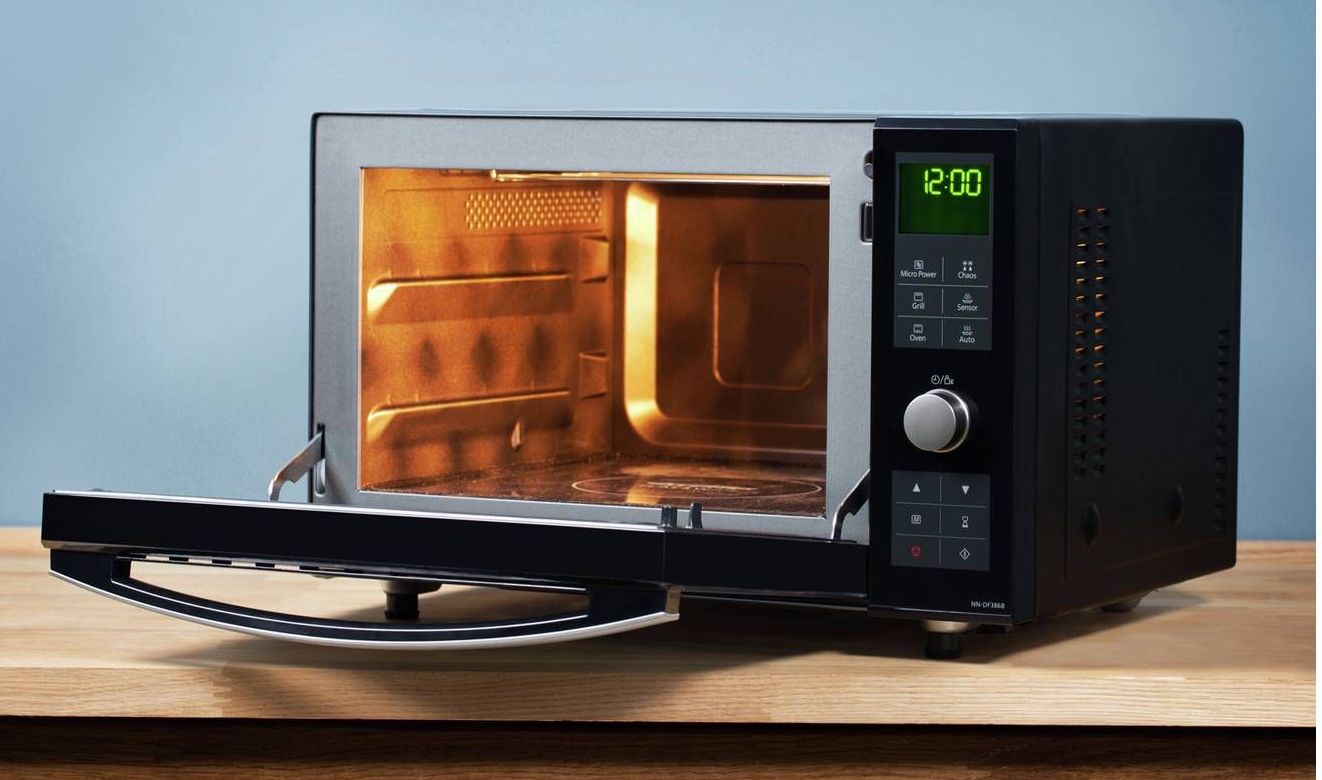
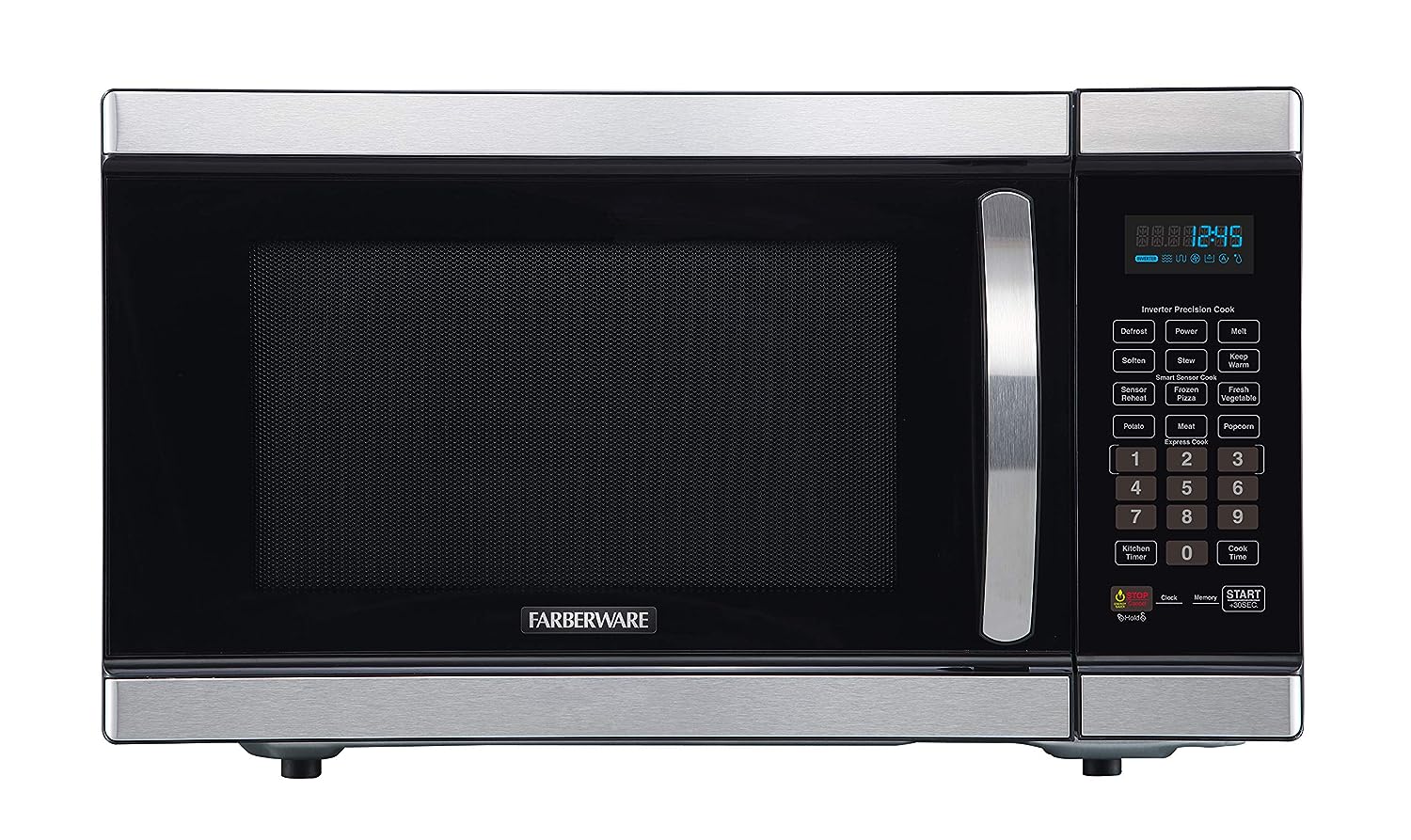


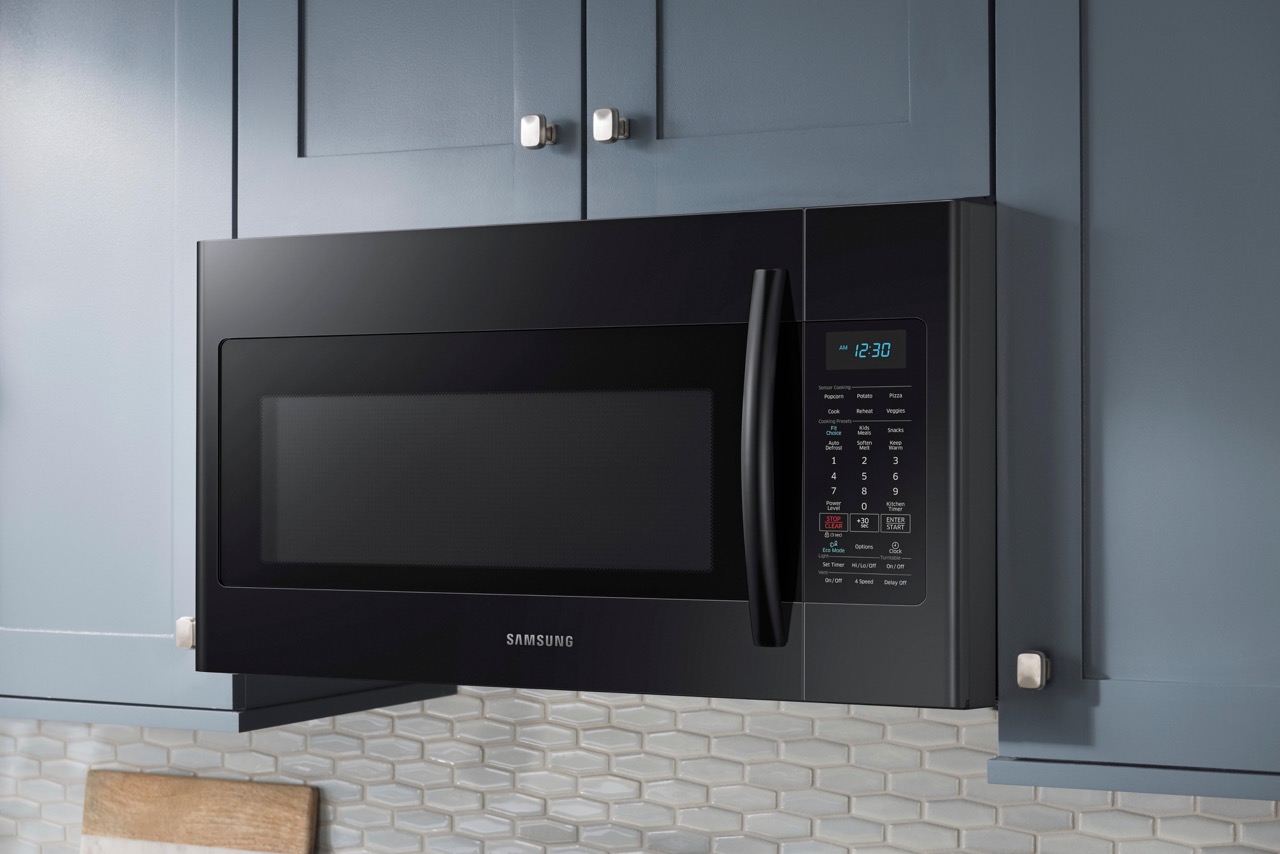

0 thoughts on “What Is An Inverter Microwave Oven”